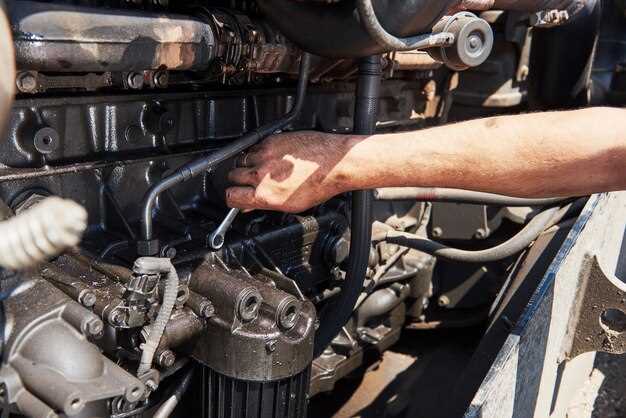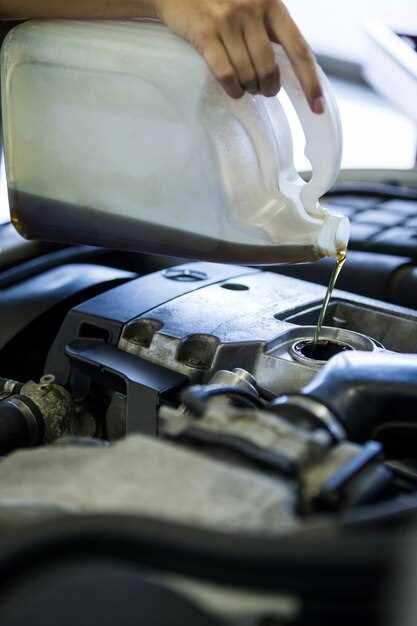
Understanding the intricacies of your BMW’s engine fuel system is crucial for maintaining optimal performance. One of the most common issues that drivers encounter is fuel delivery problems, which can often be traced back to a clogged fuel filter. A clogged filter can restrict the flow of fuel to the engine, leading to poor acceleration, stalling, and even starting difficulties.
Identifying and addressing these fuel system problems early on is essential for avoiding more serious engine issues down the line. If you notice inconsistent engine performance or unusual noises, it may be time to investigate the state of your fuel filter and other related components. Checking for clogs within the system can prevent costly repairs and ensure that your BMW runs smoothly.
In this article, we will explore the various symptoms of fuel system problems, how to diagnose them, and the steps necessary to troubleshoot and resolve issues, particularly those resulting from a clogged fuel filter. By equipping yourself with this knowledge, you will be better prepared to maintain the health of your BMW engine.
Identifying Symptoms of Fuel Filter Clog in BMW Engines

A clogged fuel filter can significantly impact the performance of BMW engines. Understanding the symptoms of this issue is crucial for timely diagnosis and repair. Below are key indicators that may suggest a fuel filter clog in your BMW.
1. Decreased Engine Performance: One of the first signs of a clogged fuel filter is a noticeable decrease in engine performance. You may experience sluggish acceleration, poor throttle response, and difficulty maintaining speed. This occurs because the filter impedes the delivery of fuel to the engine, causing it to run lean.
2. Engine Stalling: Frequent stalling or hesitation during driving can be attributed to a fuel filter blockage. When the engine does not receive an adequate fuel supply due to a clogged filter, it may shut off unexpectedly, especially during idling or low-speed driving.
3. Difficulty Starting: If your BMW struggles to start or requires multiple attempts before the engine turns over, a faulty fuel filter might be the culprit. Insufficient fuel delivery caused by a clog can prevent the engine from getting the necessary fuel to ignite properly.
4. Unusual Noises: Listen for unusual sounds coming from the engine bay, such as sputtering or chugging noises. These sounds may indicate that the fuel system is struggling to deliver an adequate amount of fuel, often due to a clogged filter.
5. Warning Lights: Pay attention to the dashboard warning lights. If the check engine light illuminates, it could point to various issues, including fuel delivery problems associated with a clogged filter. A diagnostic scanner can help determine the exact cause of the warning.
6. Poor Fuel Economy: If you notice a significant decrease in fuel efficiency, a clogged fuel filter may be affecting the engine’s ability to operate efficiently. The engine may consume more fuel than usual when struggling to draw sufficient fuel through a restricted filter.
Regular maintenance, including timely fuel filter replacement, is essential to avoid these issues. If you observe any of these symptoms, it is advisable to have your BMW inspected by a professional to ensure optimal engine performance.
Steps to Test Fuel Delivery in BMW Vehicles

Testing the fuel delivery system in BMW vehicles is essential for identifying potential issues that can lead to engine performance problems. Follow these steps to ensure that the fuel is reaching the engine efficiently.
1. Check the Fuel Pump: Start by listening for the fuel pump operation. Turn the ignition key to the “ON” position without starting the engine. You should hear a humming sound from the fuel tank area, indicating that the pump is working. If there is no sound, you may need to inspect the fuel pump’s electrical connections or consider a replacement.
2. Inspect the Fuel Filter: The fuel filter can become clogged over time, restricting the flow of fuel. Locate the filter, typically found along the fuel line under the vehicle or in the engine bay. Remove the filter and check for any debris or blockages. If it appears dirty or hasn’t been replaced in accordance with the maintenance schedule, consider replacing it to restore proper fuel flow.
3. Test Fuel Pressure: Use a fuel pressure gauge to measure the pressure in the fuel line. Connect the gauge to the service port on the fuel rail. The reading should match the specifications outlined in the BMW service manual. If the pressure is low, it could indicate a malfunctioning fuel pump, clogged filter, or issues with the fuel pressure regulator.
4. Examine Fuel Lines: Inspect the fuel lines for any visible leaks, cracks, or kinks that could impede fuel flow. Check for signs of wear or corrosion. A clogged or damaged line may need to be replaced to ensure uninterrupted fuel delivery.
5. Scan for Error Codes: Use an OBD-II scanner to check for any diagnostic trouble codes (DTCs) related to the fuel system. Codes can provide valuable insight into what might be causing delivery issues, such as problems with sensors or electronic controls.
6. Check for Injector Functionality: Fuel injectors are critical for delivering fuel to the combustion chamber. Ensure they are functioning correctly by listening for a clicking sound when the engine is running. If there’s no sound or if the engine runs rough, the injectors may be clogged or faulty and may require cleaning or replacement.
Following these steps will help diagnose fuel delivery problems in BMW vehicles, allowing you to take the necessary actions to restore optimal engine performance.
Practical Solutions for Clogged Fuel Filters in BMW Models
Clogged fuel filters can severely impact fuel delivery in BMW vehicles, leading to poor engine performance and potential damage. Identifying the issue early can save time and repair costs. The following solutions can help address clogged fuel filters effectively.
First, regular maintenance is essential. It is advisable to check and replace the fuel filter according to the manufacturer’s recommended schedule. For most BMW models, this interval is typically every 30,000 to 50,000 miles, but it may vary depending on driving conditions and fuel quality.
Second, when diagnosing a clogged fuel filter, listen for signs of fuel starvation, such as engine sputtering or difficulty starting. By monitoring these symptoms, you can take action before the problem worsens. Using an OBD-II scanner can also help identify fuel system-related trouble codes, guiding you to the root of the issue.
If a clogged filter is confirmed, the next step is replacement. Ensure you have the correct replacement filter for your specific BMW model. Carefully follow the manufacturer’s instructions for removal and installation to avoid damaging fuel lines. Always relieve the fuel pressure before commencing this task to prevent spills and ensure safety.
In some cases, cleaning the filter may be an option. However, this is often less effective than replacement and can lead to further issues down the line. If choosing to clean the filter, use a suitable solvent and a gentle approach to avoid causing any damage to the filter media.
Another practical solution includes inspecting the fuel system for contaminants. If a clogged filter is detected, it may indicate larger issues like fuel tank debris or poor-quality fuel. Adding a fuel system cleaner to the tank can help dissolve deposits, but it is not a substitute for physical removal of the filter.
Finally, consider upgrading to a higher-quality fuel filter if you frequently experience clogging. Premium filters often feature advanced filtration capabilities, which can enhance fuel delivery and protect the engine from harmful particulates.
